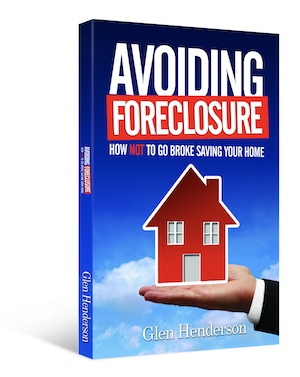What is a loan modification?
A loan modification is an agreement between you and your mortgage lender to change the terms of your mortgage loan. A loan modification is different from refinancing your mortgage. Refinancing entails replacing your loan with a new mortgage, whereas a loan modification changes the terms of your existing loan. Loan modifications can lower your mortgage payments byways of:
- Re-negotiating one or more terms
- Reducing interest rates
- Changing homeowners’ mortgage product from an adjustable to a fixed rate
- Extending current terms
There are many different types of loan mod programs. You may be eligible for one and not another.
Who wants a loan modification?
If you’re struggling to make your monthly mortgage payments or have fallen behind, you may be at risk of losing your home. If you’re struggling to make your monthly mortgage payments or have already fallen behind, you may be at risk of losing your home. Depending on the circumstances, you may be eligible for a loan modification, which can lower your monthly payments and make it easier to stay on top of mortgage payments to avoid foreclosure.
Who qualifies for a loan modification?
Unfortunately, not everyone struggling to make a mortgage payment can qualify for a loan modification. Generally, homeowners must either be delinquent or facing imminent default, meaning they’re not delinquent yet, but there’s a high probability they will be.
Reasons for imminent default include the loss of a job, loss of a spouse, a disability, or an illness that has affected your ability to repay your mortgage on the original loan terms.
Loan mods are not easily granted, take time, and have to be justifiable. Here are 6 small steps to ensure your possibility of approval and aid your process:
- Prior to contacting your lender, you must have a steady income, and income must exceed expenses. If you are part of the unemployment program, this disqualifies you from the majority of eligibility for a loan modification. You must own the primary residence of home you are applying loan modification for
- Have a survival plan and a backup budget in case of job loss written out. Prepare proof of hardship, and a hardship letter explaining why you need the modification. You must prioritize mortgage payments and demonstrate what you are planning on doing, or currently are doing to get out of the situation- for instance, showing non- essential, non-necessity spendings you are cutting.
- Find out who your loan belongs to. You might qualify for programs such as Home Affordable Modification Program (HAMP), and Home Affordable Refinance Program (HARP). Many lenders participate in these programs.
- Call your lender, and ask for the loss mitigation department. They will be able to provide all the information you need and more importantly, answer your questions. Have all the necessary information on hand. It helps to be detailed and straight to the point, staying away from life stories. Prepare paperwork they will be asking for, such as pay stubs, bank statements, hardship letter and have them handy.
- Do not miss deadlines and always send documents by certified mail. Always. Anytime they give you completion date it is your responsibility to follow up. They deal with thousands of these calls daily, it is your job to follow up.
- Try to be patient and start saving your money. On average a loan modification can take 90-180 days to complete. If your property is going through foreclosure proceedings ask for a deferment and let them know your property is going through a loan mod. Connect your lender with the loan mod department and make sure they are in constant communication.
BE WARY OF FORECLOSURE VULTURE SCAMS. Unfortunately, there are companies and individuals who prey on people in difficult and sensitive circumstances.
If you’re denied a loan modification, you can file an appeal with your mortgage lender. Consider working with a HUD-approved advisor who can assist you for free in challenging the decision and help you understand your options.
What are the potential downsides to a loan modification?
One potential downside to a loan modification: It may be added to your credit report and could negatively impact your credit score. The resulting credit dip won’t be nearly as negative as a foreclosure but could affect your ability to qualify for other loans for a time.
Is my loan modification permanent?
No, your modification may be temporary. If that is the case, you will likely need to return to the original terms of your mortgage and repay the amount that was deferred before you can qualify for a new purchase or refinance loan. After permanent modifications, lenders may want to see a record of 12 or even 24 on-time payments to determine your ability to repay a new loan.
If you are considering a loan modification and would like to discuss your options, contact us today for a no-obligation consultation.




